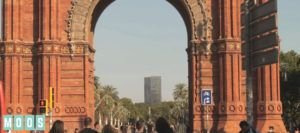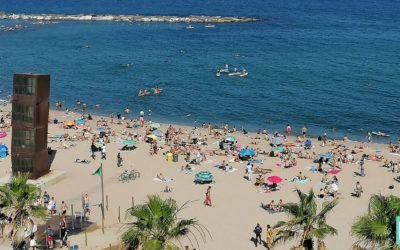Going out for drinks in the Gràcia neighborhood often means taking a walk around the Placa de la Virreina. Surrounded by three streets where there is no traffic, it is the perfect place to find a bar and meet friends. And the best part: it is only 170 meters from Elephanta!
The name of the square originates from the old town and palace where María Francesca Fiveller de Claresquí i de Bru, better known as the “Virreina”.
Why is it so known? The answer is more than logical: for being the wife of a Viceroy.
Manuel d’Amat i Junyent, of Catalan origin, was governor of Chile and Viceroy of Peru until 1777. Back in Spain and at age 75, in 1779 he married María Francesca, a young woman of just over 20 years of age, Belonging to an important Barcelonian family and who, before her marriage, had been a novice in the convent of Santa María de Jonqueres.

The circumstances of the marriage are unclear. Don Manuel is said to marry Maria Francesca in a kind of reparation of the young woman’s honor… because the wedding should have been with the viceroy’s nephew, Antoni d’Amat. But for unknown reasons the boy never did his part and Maria stayed with the uncle, a man much older than her but of great fortune.
What is known is that the viceroy was a man who liked to show his status and show off his money. For this reason, he ordered the construction of two large palaces. The first on the famous Rambla de Barcelona known as the Palau de la Virreina, is a wonderful example of Catalan Baroque and belongs to the Barcelona City Council.
A Summer palace
The second, in Villa de Gracia. A palace built as a summer house for the married couple and, it is said, was even more imposing than the one located in the center of the city.

Keep in mind that the town of Gràcia in those years was fundamentally rural, land of farmhouses and orchards. With the Industrial Revolution and the arrival of the 19th century, the landscape changed. But in those years of the late eighteenth century, the viceroy took control of a more than considerable “little land”: from Travessera de Gràcia to Carrer Providencia, and from Torrent de l’Olla to Torrent d’en Vidalet.
Unfortunately, poor Manuel would not be able to enjoy his new properties. Only three years after his marriage, he died. And the young viceroy was the one who could enjoy such a legacy. Hence, we all know the Rambla palace and Gràcia square with her name and not with that of her husband.
The roles it fulfilled.
María Francesca died in 1791, and from that moment, changes would begin in what had been her estate in the town of Gràcia.
It previously was the residence of a religious order and, later, of French people who escaped after the Revolution in the neighboring country. Also, it became a hospice to care for yellow fever patients in the early nineteenth century.
Then came the decline and finally the destruction of the palace.

The lands began to be redistributed and urbanized, and in 1878 the architect Josep Artigas i Ramoneda built the square that we know today. Located precisely in the place where the palace of the viceroy was.
It’s a shame, but almost all vestiges of that incredible building have been lost. Its stones are believed to be part of the church in the plaza today
The Legend.
However, there is a piece that can be identified as part of the old palace. Yes, only one that we encourage you to look for on the right side (if we look at it from the front) of the Sant Joan church.
There, there is an original tile where they are represented, which are supposed to be, the viceroy and the “virreina”, in some medallions. And here comes the legend: they say that if you stop at midnight, in front of those medallions, and you repeat “Perricholi” three times, the name of the lover of French Mary, the face of the viceroy gets angry!.

Maybe it’s only a matter of trying it (I think it should work better after a few gin-tonics)
Last important fact: this church (the parish of San Juan Bautista de Gràcia) by itself is quite special. If you are one of those who look for the traces of Gaudí throughout Barcelona, you cannot miss the parish of Sant Joan.
At the time when the architect lived and worked in Parc Güell, he used to walk down every morning to pray in this same church, on his way to the Sagrada Familia. He did it with his partner and right hand, Francesc Berenguer, who is credited with building the chapel of the Blessed Sacrament which is in the basement. However, in 2016, Josep María Tarragona, researcher of Gaudí’s work, questioned this statement and presented evidence to demonstrate that the chapel was actually the work of Antoni Gaudí himself. There is no official confirmation of his hypotheses, but it certainly does not stop adding more attractiveness to such an emblematic and beautiful place in the Gràcia neighborhood.
Sources: tourhistoria.es / elperiodico.com







0 Comments